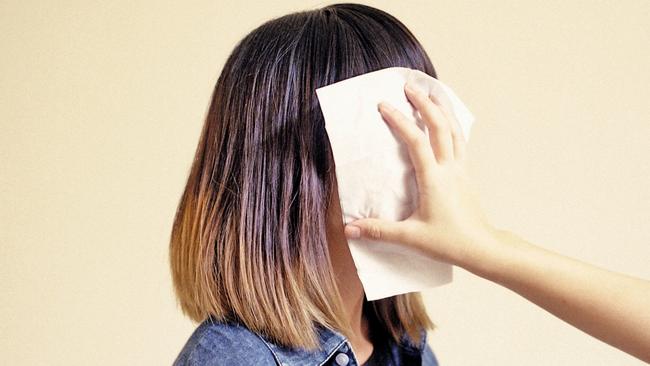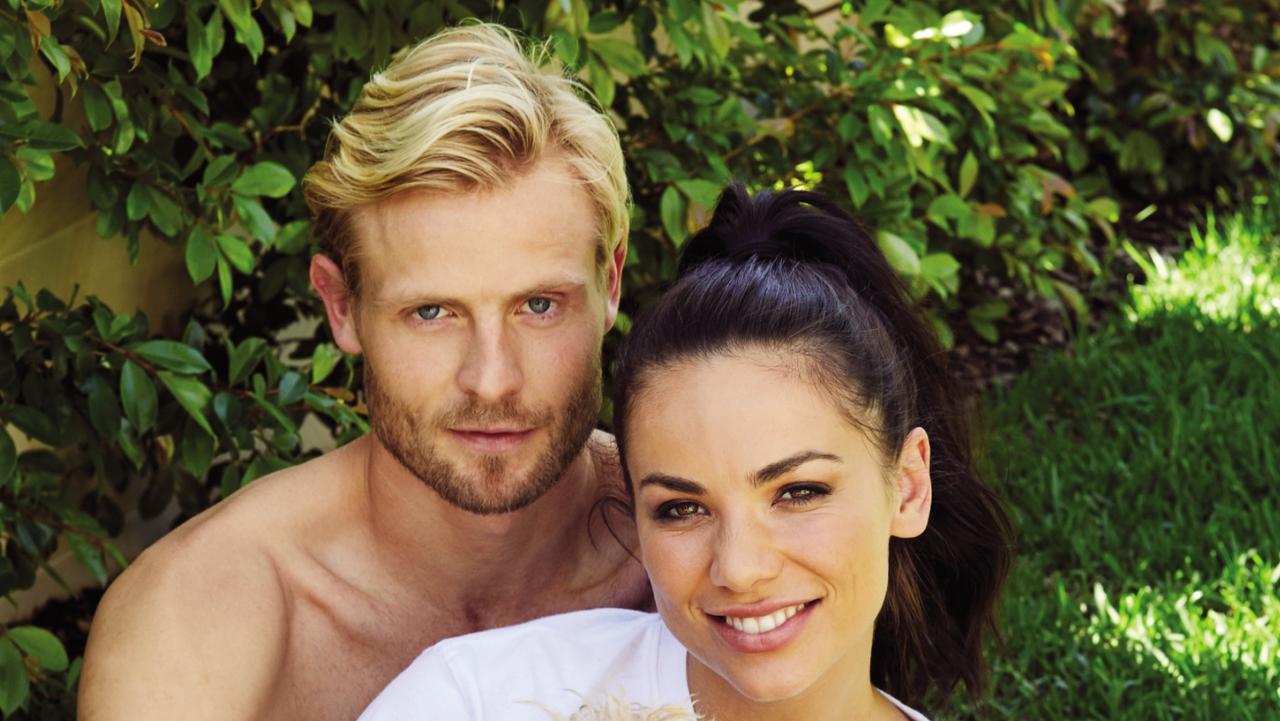Will the flu jab stop you spending winter covered in tissues?
TOSSING up whether to have a flu jab? Carmel Sparke answers the questions you may have about vaccination this winter.

Body+Soul Daily
Don't miss out on the headlines from Body+Soul Daily. Followed categories will be added to My News.
- MORE BODY+SOUL NEWS AND FEATURES
- SUPERFOODS FOR SUPERWOMEN
- HEALTHY PEOPLE EAT BREAKFAST AND DON’T DIET
- I WAS ADDICTED TO PULLING MY HAIR OUT
YOU’VE probably noticed signs at your local pharmacy advertising a flu shot or emails at work urging you to have your seasonal jab.
But is it worth getting the influenza vaccine and how likely are you to catch the flu this year anyway?
The short answer — it’s worth considering. Especially since Australian GPs report some 300,000 consultations a year regarding flu alone.

Apart from making you feel lousy and wreaking havoc with your work, social and training schedule, the influenza virus can also be fatal. Each year in Australia, the flu kills between 1500 and 3500, mostly elderly, people.
It also hospitalises 18,000 people each year, which is why health authorities take influenza seriously and recommend an annual vaccination for anyone over six months of age.
Last year was a bumper flu season, with a record 100,571 laboratory-confirmed cases. Experts have said that improved reporting accounted for some of the increase, but many doctors still described 2015 as a big year for the flu.
Influenza type-B strains dominated, causing 62 per cent of cases, with a late surge in one type-B strain that wasn’t covered by the vaccine being used.
Despite the latter, professor Robert Booy, head of clinical research at the National Centre for Immunisation Research & Surveillance, says the vaccine is “worth having”.
“It’s not excellent,” he said. “It’s not perfect, but it’s certainly a good vaccine.
“It would be wonderful if in five to 10 years we had a universal vaccine which you’d only have to get once or twice — not every year.
Researchers in Melbourne reported recently their latest developments suggesting they’re getting closer to the idea of a universal vaccine […] but it’s at least five to 10 years off.”
So for your best chance to ward off the flu, arm yourself with some facts, a healthy dose of vitamin C and possibly a flu jab.
But exactly what kind of flu season is 2016 predicted to be?
Experts say it’s notoriously difficult to judge how serious a coming flu season will look like and what strains will cause the most problems.
It’s hard to draw authorities into crystal ball gazing on the severity of the approaching winter, other than to say flu seasons tend to run in cycles, so you’ll have a bad season one year and a milder one the following.
Who needs a flu shot?
Each year, up to one in 10 adults and one in three children are infected with the influenza virus, and certain groups are more prone to the serious complications relating to the flu.
These people are offered free influenza vaccines, funded by the Australian government through the Immunise Australia Program.
It’s available free to those older than 65, Aboriginal and Torres Strait Islander people aged six months to five years and 15 and over, pregnant women and those with certain chronic conditions such as diabetes and heart disease.
However, figures show while 70 per cent of older people have the vaccine, the number drops to just 46 per cent of those who are considered at risk.
But you should also consider getting the jab if you care for people in these groups.
“Carers become killers in winter, because less than half of them are vaccinated on average,” Booy says.
“So we need to maximise vaccine uptake of people who work in nursing homes [and] in hospitals. It’s really unacceptable that we require people to be vaccinated against hepatitis B or tuberculosis as health professionals, but we’re still not requiring them to be vaccinated against flu.”
What about everyone else?
Even though an influenza jab isn’t an iron-clad guarantee you’ll skip the flu this year, it’s your best defence against the virus.
Influenza vaccines provide about 50 to 60 per cent protection which means that if two people have been immunised and are exposed to the virus, one of them will catch the flu.
In addition to this, working out which strains will dominate over a given season can be unpredictable, so the vaccine may not include the strain you encounter on the train home from work.
As well, vaccines need to be tweaked every season, as the virus mutates — meaning you need a new flu shot each year.
What about the new “super vaccine”?
This year, the government has moved to a quadrivalent vaccine, one that protects against four strains of the influenza virus: two type-A and two type-B. It’s offered free to groups considered most at risk of serious illness from the flu.
Last year, the government-provided vaccine was a trivalent version, covering three strains of flu — two type-As and one type-B. However, many of the flu cases last year were type-B, including a strain not included in this particular vaccine.
You can choose to buy either the quadrivalent vaccine, which will give you added protection against the additional type-B strain and costs around $25 plus your doctor’s consultation fee.
Or you can buy the trivalent, which is cheaper at around $9 a dose, and still offers pretty good protection but will miss a type of the B strain.
Can’t I get the flu from the vaccine?
The answer is a definite no as vaccines in Australian don’t contain the live virus. Some people confuse the common side effects of a sore arm, muscle ache, headache and fever with the flu.
“Those are side effects to the vaccine that can last one to two days. You don’t actually get a respiratory infection, however, so you don’t get symptoms of sore throat, runny nose or cough,” Booy explains.
“Some people get a respiratory infection because a) they were already brewing it from a day or two before and b) they actually caught it in the waiting room and it develops the next day,
or even the evening of a flu vaccine.”
When should I be vaccinated?
It’s recommend that you have a flu shot in autumn, as it takes 10 days to two weeks for your body to create the necessary antibodies, before the flu season kicks off between June and September.
Isn’t it better to fall sick and then strengthen my immunity naturally?
Not the best idea. The natural form of a virus causes more severe infection than vaccines and, as a consequence, produces a stronger long-term immunity.
“So you could, for example, have wild measles and get a longer-term immunity than you do from vaccines,” Booy says. “But then why would you want to have a wild infection that could damage your heart or brain or even give you pneumonia?”
The Stats
77: The percentage of virus strains that were accounted for by the Australian government’s trivalent influenza vaccination in 2015. Source: Department of Health.
20-30: The percentage of influenza cases worldwide that strike children, according to WHO. The figure for adults stands at 5-10 per cent. Source: World Health Organisation (WHO).
Additional reporting: Lizza Gebilagin.


